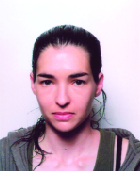יעל אשד אייזנבך 2005-2006

- מוסד לימודים לדוקטורט:
- מכון ויצמן למדע
- תחום אקדמי:
- ביולוגיה מולקולארית של התא
- מנחה/מנחים בדוקטורט:
- פרופ' אליאור פלס
- נושא הדוקטורט:
- Neuro-Glial Interactions
- שנת קבלת הדוקטורט:
- 2009
- מוסד נוכחי:
- מכון ויצמן למדע
- משרה אקדמית נוכחית:
- מדענית
- כתובת דוא"ל:
- yael.eshed@weizmann.ac.il
- קורות חיים
- פרסומים
Yael Eshed-Eisenbach is a biologist, currently working as a staff scientist in the Weizmann Institute of Science Department of Molecular Cell Biology in Prof. Elior Peles’ laboratory. Yael received her PhD in 2009. Her thesis, “Mechanisms of Node of Ranvier Formation”, was written under the supervision of Prof. Elior Peles, and won the J.F. Kennedy Prize from the Feinberg Graduate School of the Weizmann Institute of Science.
Yael’s research results revealed the mechanism by which Schwann cells (SC) control sodium channel clustering along myelinated axons and the molecular assembly of the peripheral node of Ranvier. Her lab has shown that gliomedin is both sufficient and necessary for clustering of sodium channels in mixed DRG cultures, a conclusion later validated in vivo. In addition, findings have demonstrated that gliomedin is shed from the SC membrane by a furin protease, forms high molecular weight aggregates through its N-terminal region, and incorporated into the SC extracellular matrix (ECM) in a heparin-dependent manner. Using mutant gliomedin enabled Yael’s lab to demonstrate that the shedding of gliomadin is indispensable for heminode formation, while processing by BMP-1 negatively regulates its clustering activity. It was also shown that the heparin-binding capacity of gliomodin, although not vital for channel clustering, facilitates the process and is involved in shaping the non-neuronal aspects of the node.
Yael’s PhD is a continuation of her MSc work. In her research for her thesis, “Neuron-Glia Interactions in Myelinated Nerves”, she discovered a new protein (gliomedin) that mediates communication between the two major cell types in the nervous system; neurons and glial cells.
Yaels findings have been published in a variety of journals including Neuron and the Journal of Cell Biology.
